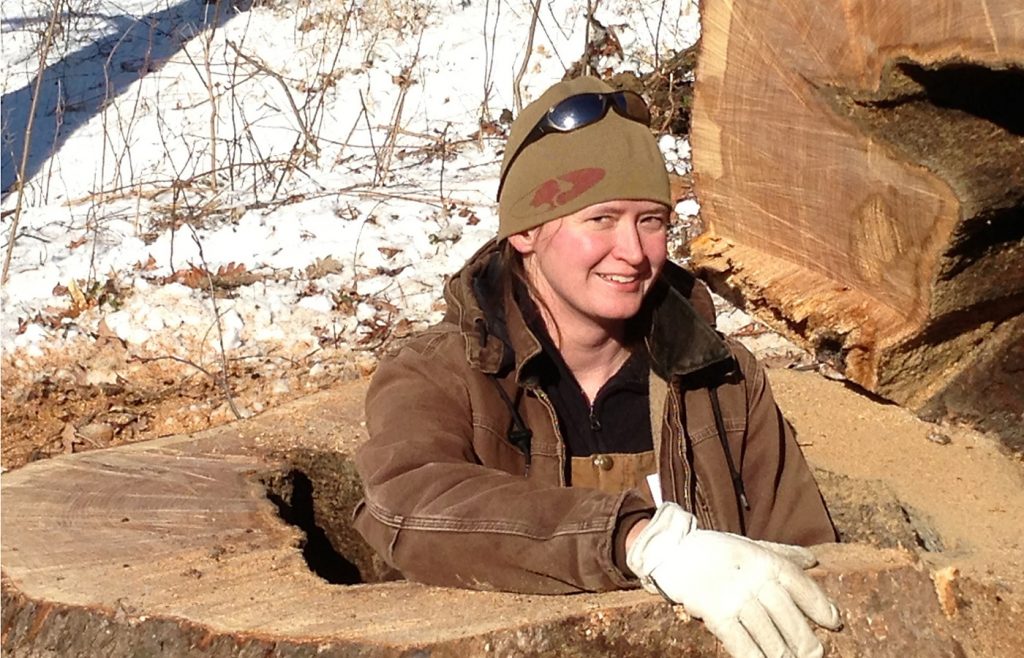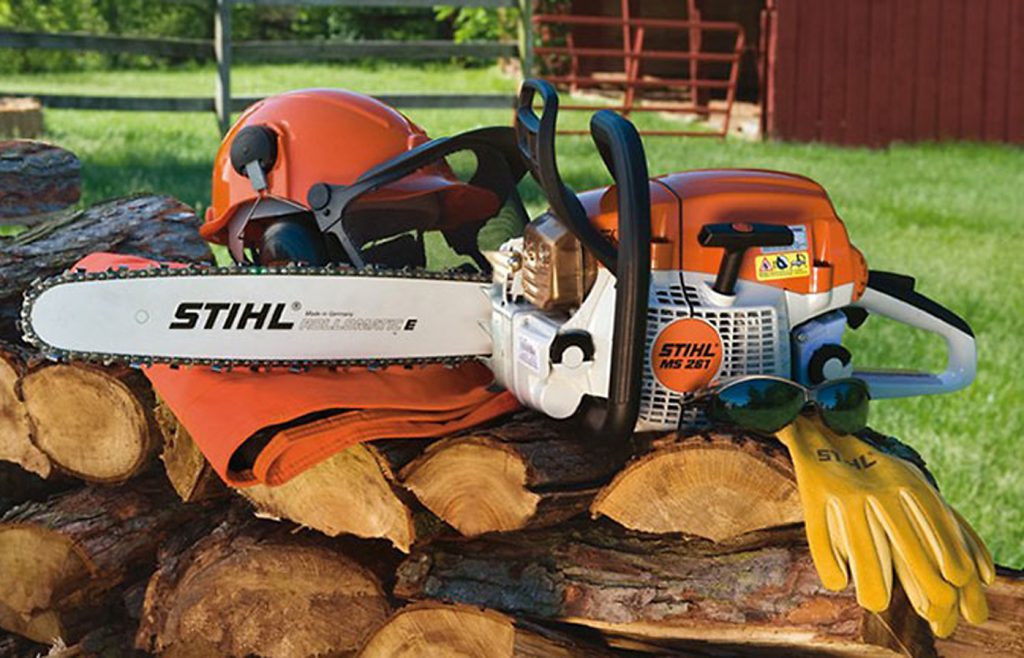
What could be more empowering than using a chainsaw? Learn about basic chainsaw safety and maintenance in a class just for women taught by Jean Wiedenheft, director of land stewardship at Indian Creek Nature Center. The class covers how to safely start and operate a chainsaw, as well as how to choose the right PPE (personal protective equipment). If it’s not raining, participants will practice using a chainsaw outdoors on timber. Participants should come to the class wearing boots, long pants, and a long-sleeved shirt. If you own safety glasses and leather gloves, bring those too! Extra glasses and gloves will be on hand, along with chaps, safety helmets, and ear protection.
This class is for women 18 years of age and older, and runs from 9 a.m. to noon on Saturday, May 19, at Indian Creek Nature Center, 5300 Otis Road SE, Cedar Rapids. Register online or call (319) 362-0664. The cost is $15 for members, $18 for non-members. Friday, May 18, is the last day to register!
Jean Wiedenheft started as a volunteer at the Nature Center, helping with scout workshops and spreading wood chips on the trails. She’s been a full-time employee since 2001, sharing her enthusiasm for nature with volunteers and visitors. We asked Jean to tell us more about her skill with chainsaws and why she wants to share it.
First off, I must say I’m impressed with your skills! I’m intimidated by a weed wacker, much less a chainsaw. How did you learn to use one?
My dad taught me chainsawing basics. When I started at Indian Creek Nature Center, former director Rich Patterson taught me a lot. My husband spent a lot of time working with me, and still does. I try to spend as much time as possible with experienced volunteers. I’ve had a lot of patient mentors.
How did the class come about? Did you get requests?
Last year, a colleague of mine at the Nature Center offered Weedwacking Women, which was a popular hands-on class. It covered weedwackers, power drills, that sort of thing. Participants asked about chainsawing, but it wasn’t a core component of the class. I field a lot of questions—from men and women—about everything from how to sharpen hand pruners to what kind of chainsaw to buy.
I think as people learn more about ecology, they will naturally want to interact with nature. Chainsawing can be a crucial part of that.
I am incredibly grateful for my family, the mentors I’ve had and will continue to have. If you don’t have a mentor in your life, starting a challenging skill can be intimidating. It’s important to me to share what I know with others.
Is the class suitable for beginners?
Absolutely. It doesn’t matter whether you have a saw or not. I’ll cover safety, what to look for in a saw, basic techniques, and how to care for a saw. We’ll go out and participants can get some hands-on experience, if they would like. Since the class is limited to 10 participants, I should have time to address specific questions people have.
What is the most important thing to learn about a chainsaw?
Prioritize safety, before tackling what you think you want to accomplish. That means being patient. It’s easy to think, “Oh, I just need to drop this one more tree, and I’ll be done.” Or “I really wanted to have this done before the weekend, and its three p.m. on a Friday afternoon.” Chainsawing is inherently dangerous. Doing it when you are already tired, or don’t have enough time—or without making time to put on your gear or bothering to sharpen your chainsaw—compounds potential problems rapidly.
 Give us your top reasons why women should learn to use a chainsaw.
Give us your top reasons why women should learn to use a chainsaw.
1. Everyone should learn to use a chainsaw. It enables you to make the natural world ecologically healthier and safer.
2. It teaches problem solving and critical thinking.
3. It’s a good workout.
4. It allows you to value that skill set and make informed decisions. I have no problem calling a tree service, or someone with more experience, for challenging trees.
How often do you use your chain saw?
Once a month. Whenever I can. It used to be weekly, but as the project manager for Indian Creek Nature Center’s Living Building Challenge, I’m not spending as much time in the field as I normally would. I save big chainsaw projects for the winter whenever possible. The ground is frozen, the temperatures are better for labor intensive work, and there is less vegetation.
This might be short notice for some women to take the class, as registration ends Friday, May 18, so will you be offering the class again?
This is the first time I’ve offered the class. I’d like to offer the class every spring and fall, or at least annually. There will always be women who would do more with the land, if they had the skills and knowledge.
